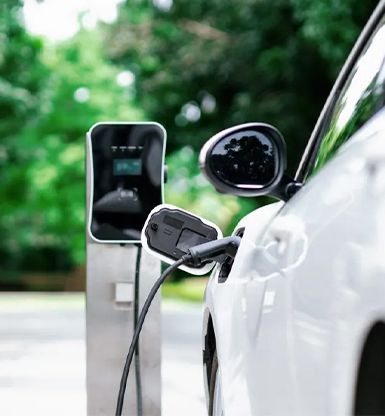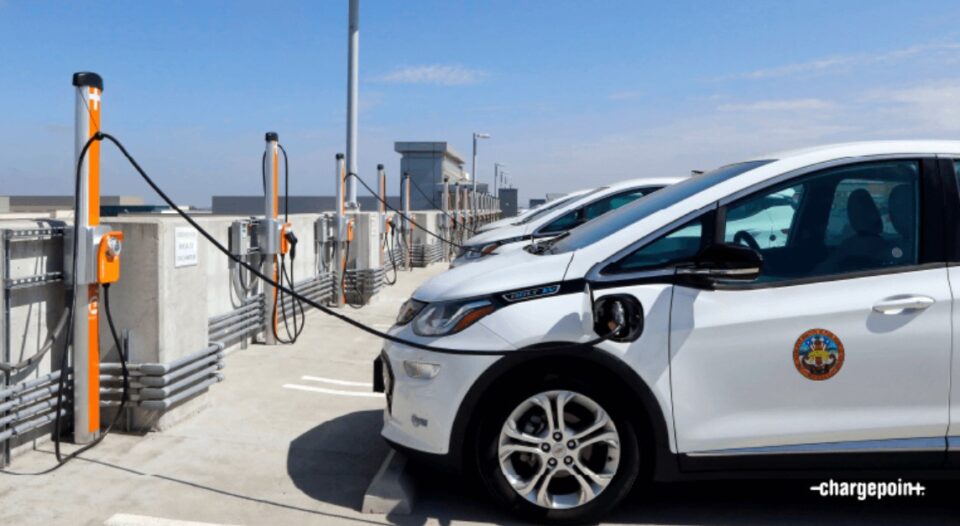Expert Opinions and Market Insights When You Buy EV Charging news
Expert Opinions and Market Insights When You Buy EV Charging news
Blog Article
Top EV Charging News: Key Updates on Framework and Development

Recent Developments in Fast-Charging Innovation

Moreover, innovations in battery technology, including enhanced thermal administration systems and greater energy density batteries, enhance fast-charging abilities. These advancements alleviate the risk of battery destruction throughout rapid charging, guaranteeing long life and performance for EV owners.
In addition, the integration of clever billing remedies is improving customer experience, making it possible for real-time surveillance and vibrant rates versions. EV Charging news. This versatility allows motorists to optimize charging times and costs based upon grid need
As car manufacturers remain to buy fast-charging networks, the partnership between sector stakeholders is important. Collaborations between billing station providers and automotive producers are leading the way for substantial protection, ultimately cultivating an extra robust EV ecosystem. These advancements are critical in sustaining the shift to sustainable transport.
Government Initiatives for Billing Development
Federal government campaigns play a critical function in the growth of electric lorry (EV) billing facilities, facilitating the change to sustainable transportation. Various federal and state programs are being implemented to improve charging ease of access, minimize the financial problem on customers, and promote the fostering of electric lorries.
Notably, the U.S. federal government has alloted substantial funding via the Infrastructure Investment and Jobs Act, which allocates $7.5 billion for EV charging network advancement across the country. This funding is aimed at deploying hundreds of new charging terminals, particularly in underserved areas, thus dealing with range stress and anxiety among possible EV customers.
Furthermore, numerous states are enacting regulation to improve the allowing procedure for billing station installations, which is vital for speeding up release. Rewards such as tax credit ratings and rebates for both consumers and organizations are also being presented to motivate the installment of billing infrastructure.
Furthermore, public-private partnerships are progressively ending up being an emphasis, leveraging personal investment to match federal government financing. These campaigns emphasize a collaborative strategy necessary for building a efficient and extensive EV billing network, eventually adding to a greener and even more lasting future.
Cutting-edge Battery Solutions Enhancing Effectiveness
Changing the landscape of electrical vehicle (EV) innovation, cutting-edge battery options are dramatically improving efficiency and efficiency. Advancements in battery chemistry, especially with lithium-sulfur and solid-state batteries, are resulting in increased power density, which enables for longer varieties and faster charging times. These new battery types have the possible to surpass traditional lithium-ion batteries by supplying greater capacities while minimizing weight, therefore enhancing overall vehicle efficiency.
In addition, developments in battery monitoring systems (BMS) are maximizing power usage and extending battery lifespan. Intelligent formulas keep track of battery health and wellness and performance, making it possible for real-time changes to billing and releasing procedures. This not just enhances the efficiency of the battery however also guarantees a more trusted and sustainable energy source for EVs.
Furthermore, the assimilation of reusing innovations is attending to the ecological influence of battery production and disposal. Technologies in second-life applications for EV batteries are promoting their usage in power storage systems, adding to a round economic situation.
As these ingenious battery solutions remain to progress, they guarantee to transform the EV market, making electric automobiles a lot more accessible and appealing to a more comprehensive audience while supporting worldwide sustainability objectives.

Collaboration Between Automakers and Charging Networks
Identifying the vital requirement for a robust charging facilities, car manufacturers are significantly teaming up with charging network suppliers to boost the EV possession experience (EV Charging news). These partnerships aim to create a smooth charging community that benefits consumers and supports the change to electric vehicles
Major automobile brand names are signing up with pressures with well-known billing networks to increase their billing station protection, ensuring chauffeurs have accessibility to trusted and convenient billing options. For circumstances, collaborations with networks like ChargePoint and Electrify America permit car manufacturers to incorporate charging remedies straight into their vehicles' navigation systems, see here now assisting customers to the closest stations and providing real-time accessibility updates.
Additionally, these collaborations usually result in the advancement of fast-charging modern technologies that substantially reduce the moment required to charge an EV. By pooling sources and proficiency, car manufacturers and charging networks can use this link innovate faster, developing services that satisfy the growing demand for electric wheelchair.
Furthermore, joint efforts might also bring about even more standard charging procedures, which can ease customer complication and promote broader EV adoption. Overall, these calculated partnerships are essential in developing a efficient and user-friendly charging facilities that satisfies the needs of an expanding electrical lorry market.
Challenges Encountering EV Billing Infrastructure
As the electric vehicle market remains to expand, a number of obstacles are emerging that impede the growth of a comprehensive billing framework. One of the main challenges is the insufficient variety of charging terminals, particularly in rural and underserved metropolitan locations. This void produces array anxiousness among prospective EV purchasers, preventing them from making the switch.
Furthermore, the lack of standardization accountable innovation complicates the infrastructure landscape. Variations in plug types and charging speeds can create confusion for customers and raise functional intricacies for charging network drivers. The combination of charging terminals into existing electrical grids presents considerable difficulties. Several areas face capability restrictions, calling for substantial investments in grid upgrades you can look here to fit boosted demand.
Another pushing problem is the high cost connected with the installment and maintenance of billing stations, which can be an obstacle for both exclusive services and public entities. Lastly, regulative hurdles and zoning constraints can delay the implementation of charging infrastructure, impeding progression in increasing important services. Attending to these challenges will be important for fostering a robust EV ecological community that supports the shift to lasting transportation.
Conclusion
In verdict, the continuous advancements in EV charging modern technology, supported by substantial federal government efforts and ingenious battery services, are important for the expansion and efficiency of electric vehicle infrastructure. Collaborations in between car manufacturers and charging service providers even more boost station coverage, resolving the growing demand for available charging alternatives. Despite obstacles that persist within the EV billing landscape, these developments indicate a positive trajectory towards a more reliable and lasting electrical car environment.
Advancements in billing facilities have led to the development of ultra-fast chargers qualified of providing up to 350 kW of power, significantly lowering billing times. Variations in plug kinds and charging speeds can create confusion for customers and boost functional complexities for charging network operators.In conclusion, the recurring innovations in EV billing technology, supported by substantial government initiatives and cutting-edge battery options, are essential for the growth and performance of electrical automobile framework. Partnerships between automakers and charging carriers additionally boost station insurance coverage, dealing with the growing demand for easily accessible charging choices. Regardless of obstacles that persist within the EV charging landscape, these advancements indicate a positive trajectory in the direction of a much more lasting and reliable electrical automobile environment.
Report this page